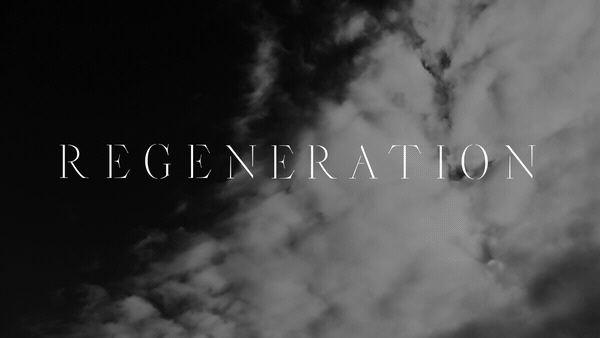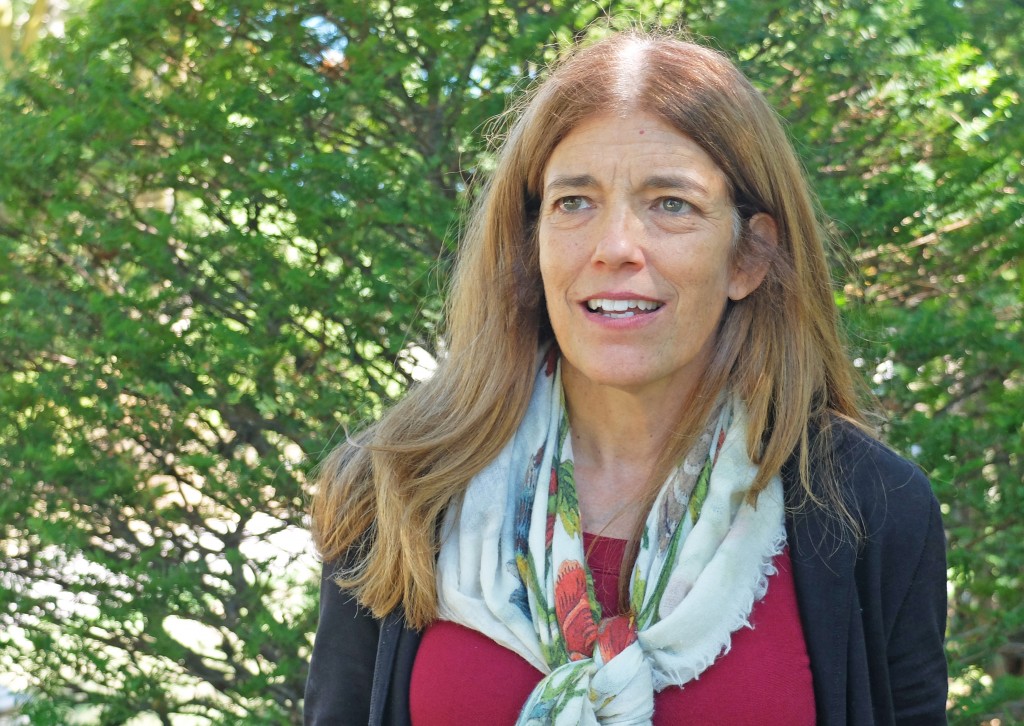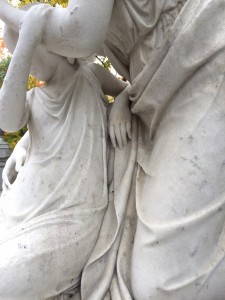Strength & Vulnerability: A Conversation with Dr. Nancy Rappaport
Dr. Nancy Rappaport is an associate professor of Psychiatry at Harvard Medical School and a child psychiatrist at the Cambridge Health Alliance. For the past twenty three years, Dr. Rappaport has worked with the Cambridge Public Schools at a school-based health center, where she develops concrete strategies for struggling students and offers professional development for teachers.
In 2009 Dr. Rappaport published In Her Wake: A Child Psychiatrist Explores the Mystery of Her Mother’s Suicide (Basic Books), for which she was awarded the Julia Ward Howe Book Award from the Boston Authors Club. Dr. Rappaport is also co-author of The Behavior Code (Harvard Education Press, 2012), a guidebook for teachers who work with children with oppositional, anxious, sexualized, or withdrawn behavior.
This October, Dr. Rappaport will perform Regeneration, an original new play she created about her journey with breast cancer and the healing she found at Mount Auburn Cemetery.
What was your first experience at Mount Auburn?
I attended a tour of Mount Auburn’s art and sculpture, given by Meg Winslow [Mount Auburn’s Curator of Historical Collections]. Meg had organized the tour and donated it as a raffle item for a Cambridge Health Alliance fundraiser the year I won their Art of Healing Award. During the tour, I was really moved by Harriot Keezia Hunt’s monument, the statue of Hygeia, Greek Goddess of Health. Harriot was one of the first female physicians in America and her sculptor, Edmonia Lewis, was the first African-American to achieve international recognition in her field.
This past year you’ve spent an incredible amount of time at Mount Auburn.
Last year, I was diagnosed with breast cancer. I walked here a lot as I processed what I was experiencing. It was from Mount Auburn Cemetery that I called my patients to let them know I would have to take a month off, because needed a mastectomy.
Then, after my surgery, this place became my respite, where I came to walk and regain my strength. I very much needed that, because I’d always used my body—running marathons, swimming at Walden Pond—to manage my stress. I wanted to be outside, but I needed a slower pace.
As I first began to walk in Mount Auburn, Meg would accompany me, showing me her favorite spots. On the days that she could not join me for a walk, she’d send me out on my own with a scavenger hunt! One day it was to go find the sculpture of the mother and daughter [the monument for Thatcher Magoun on Fir Avenue] and on another day it was to find the monument for Margaret Fuller, but I should actually call it her cenotaph. Coming here I got to learn a whole new vocabulary… I now speak “cemetery”!
And then I just kept exploring and finding new places on my own. I got completely absorbed and started reading everything I could about the place and about the people buried here whom I discovered during my walks.
Who are some of the people you discovered?
Harriot Keezia Hunt. She had the kind of fortitude I hope to have. She got rejected from Harvard Medical School, not once but twice, and she still pursued a career in medicine. She started a clinic in Boston for prostitutes and children that existed for forty years. This was the nineteenth century! She is my kind of woman!
Margaret Fuller. She had an Italian husband 15 years her junior, she was one of the first female journalists to go to Europe, and she had a child when she was 37. She was a serious rule breaker.
You know the question that they always ask in the New York Times about who you’d invite to dinner? We need to re-write that and ask what five people from Mount Auburn you’d invite to dinner. I think I’d have Harriot Keezia Hunt and Harriett Jacobs [abolitionist and author of Incidents in The Life of a Slave Girl, Written by Herself]. I’d definitely have Margaret Fuller and probably Julia Ward Howe [peace activist and women’s rights advocate]. Maybe I’d have Edwin Booth join us, but he might be a little bit depressing. And I’d invite Robert Gould Shaw. I don’t know a lot about him, but whenever I am near his monument I get the feeling he was a really special man.
You’ve learned quite a bit about the people buried here, but you’ve also spent quite a bit of time getting to know some of the living people associated with the Cemetery now.
I like to call them the “caretakers.” I talked to Hilary Hopkins about her volunteer work recording the inscriptions on the old stones. Joe Martinez [wildlife consultant] told me all about the salamanders and the toads and the frogs in the Dell. After I read the article about Bill Shea in the Globe last fall, I made an appointment to talk to him. I was so impressed with his perspective on life and death.
I really do feel that “staff” is not the right word for the people who work here. I think that this is a calling. Everyone has this amazing sense of proprietary, but there is also this feeling that Mount Auburn is a shared community belonging to all of us. The maintenance people started to recognize me because I was here a lot, and then they started talking to me, asking how I was doing and pointing things out to me.
And I have to say that you guys have the nicest security guards. I remember one day, it was just a really bad day, when I came to Mount Auburn and rode all the way to Hygeia on my bike. I had a sandwich with me. I think I broke all the rules that day. But when the security guard found me, he was so nice and gentle about telling me I couldn’t have my bike in the Cemetery.
Being sick allowed me to receive love. I have always had love from my family, but this opened me up to feel loved and cared for by others. I really noticed it here at Mount Auburn. Everyone I talked to shared incredible wisdom and generosity of spirit.
During this time, while you were recovering from breast cancer and exploring Mount Auburn, you were also writing prolifically. Out of this writing, you created your one-women play, Regeneration.
When I was feeling better and started writing to my friends about my recovery, most of what I wrote to them was about Mount Auburn. As I started writing it occurred to me that I needed to find a way to share my journey with others. But I didn’t want to write another memoir.
Creating a narrative of our trauma is a necessary part of healing, and writing is the way I create my narrative. The writing did not always come easy. Often, in an almost mystical way, words would come to me in the middle of the night when I was frightened and couldn’t sleep.
Regeneration doesn’t follow a simple story arc, so don’t expect this to be as simple as “I got sick, I got treated, I recovered.” The idea to create a one-woman show allowed me to describe this experience in a non-linear way. I wanted to share what it is like on that fine line between serenity and fear.
Regeneration also features the poetry you’ve written in this past year.
Writing poetry really opened me up. Poetry gave me the chance to be precise with language and to provide a parallel with what was happening with me.
You have previously written two books, one of them an examination of your mother’s suicide. How did creating Regeneration compare to writing your previous books?
It was definitely interesting to go from writing In Her Wake to The Behavior Code to Regeneration. In Her Wake was very personal, The Behavior Code is much more prescriptive for teachers and parents, and now I’ve looped back to the very personal with Regeneration.
With my memoir, which was about my mother who died by suicide when I was four, I performed what is sometimes referred to as a “psychological autopsy.” I interviewed people who knew my mother, my family members, and her friends. I went through archival newspaper articles and a novel she had written around the time she died. There was a great complexity to In Her Wake and it took me about 12 years to write. Sometimes when people are suicidal, they think no one is going to miss them when they are gone. The memoir was an effort to show this as faulty logic and I used the public speaking opportunities I had when it was released, to encourage more discussion on the topic of suicide and decrease stigma around mental illness.
Regeneration is very different than my memoir in that it is about my own mortality and trying to come to terms with it. Regeneration is not meant to be prescriptive, but I do hope that it is helpful for others in thinking about their health challenges and mortality and resilience.
It is incredibly brave to share your personal experience in such a public way. What do you hope that the audience takes away from your journey and this performance?
We live in a fast world and we are all so busy. New Englanders, especially, have been brought up to do a lot of living in our dash [the dash between your birth date and death date] but we all need to take a moment and slow down. Through this process I’ve learned to make an investment in being present in the life I am living.
This is a heavy topic. But, there is tenderness, and humor, and fortitude in this. I want people to be uplifted when they leave.
The concept of “being present” is something Mount Auburn has preached to its visitors since its inception. The founders believed that coming here to commune with the dead would inspire visitors to accept their own mortality and return to the world taking each day as a gift and living each day to its fullest.
I think accepting mortality is a very tall order. I am not sure I have totally accepted it. I’d say that I am now looking at it closely.
Thinking about this from a child psychiatrists’ point of view, there is an evolution to the way we think. They say toddlers are like dogs, jumping up and down all the time and being so happy to see you, but by the time they become teenagers, kids are more like cats. I’m now in the cat stage concerning mortality. I’m checking it out, not looking at it quite directly, but a little bit interested because I know it is coming. I am 56 and hopefully I’m lucky and I get to be 95, but maybe not. So, I just want to know a little bit more. I have moved from the idea of “what if” I die to “when,” but I still wouldn’t go so far as saying I’ve accepted mortality.
Denial has its benefits, and I wish I had a little bit more of it; maybe in my next life. For now I’m one who brings out the magnifying glass.
One sign of that transition from “what if” to “when” is picking out your burial space, an event you share in your performance.
For me, Alice’s Pond is where eternity is. It’s near the place where Julia Ward Howe and Margaret Fuller are buried. I love that it is not too crowded and you get the feeling of open land. You can just hear the birds and feel time collapsing as you sit there.
And Mount Auburn Cemetery is so close to where I have lived for 35 years. It’s not like I am traveling to the Bahamas. This is in my neighborhood.
That is a lovely part of the Cemetery. Are there any other places in Mount Auburn of special meaning?
The Dell is really important to me because it is a natural amphitheater and I can imagine its consecration and see it filled with two thousand people. It speaks of the ancient passage of time. I have spent time there meditating and waiting for the owls. I heard the owls at dusk and saw them once. One of my first poems in Regeneration starts with “I rush to the Dell/To hear the owl’s dusk crooning/To Make Sense of the Trade I am to make.”
Are you still doing daily walks at Mount Auburn?
I don’t come here as often now as I did in those first months after my diagnosis, but there is comfort in knowing that this place is here if I need it. It is my second home.
I feel a complete sense of relief when I walk into Mount Auburn. This place is a holding environment for all of those larger-than-life feelings and ideas.
It is magical, especially at dusk when the owls are crooning and shadows descend and I sense things are different.
You’ve had an amazing journey in this past year. What has been most surprising?
I am a psychiatrist. It is my job to talk about the unspeakable and put words to complicated feelings, but it is a completely different thing to shed light on my own eventual mortality and my own vitality.
I am one hundred percent recovered, but breast cancer introduced me to the idea of mortality. This experience has made me recognize that life is time-limited and gave me permission to take more risks.
Risk like a doctor performing a one-woman show about a pretty personal experience?
Exactly.
One of the things I needed to do was move from I have cancer to I had cancer.
October marks one year since my diagnosis. I do feel like I might be challenging fate by being so public about everything that has happened. But one thing I have learned from all of this is that strength and vulnerability go hand-in-hand. I didn’t appreciate that before.
Reserve your seats for Regeneration, an original new play by Nancy Rappaport.
Saturday, October 1st, 3 pm
Sunday, October 2nd, 3 pm





Leave a Reply to anne parker Cancel reply